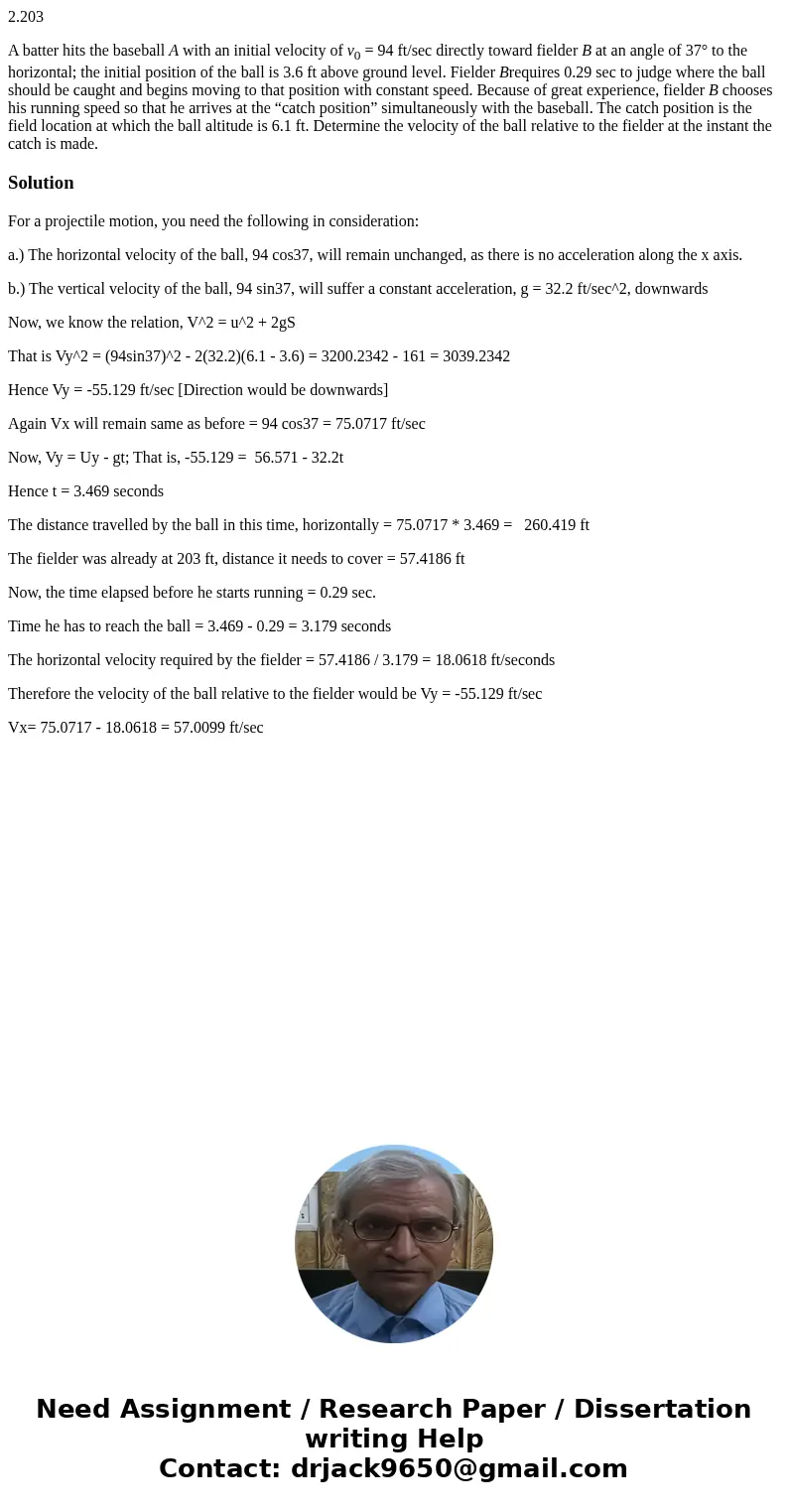2203 A batter hits the baseball A with an initial velocity o
2.203
A batter hits the baseball A with an initial velocity of v0 = 94 ft/sec directly toward fielder B at an angle of 37° to the horizontal; the initial position of the ball is 3.6 ft above ground level. Fielder Brequires 0.29 sec to judge where the ball should be caught and begins moving to that position with constant speed. Because of great experience, fielder B chooses his running speed so that he arrives at the “catch position” simultaneously with the baseball. The catch position is the field location at which the ball altitude is 6.1 ft. Determine the velocity of the ball relative to the fielder at the instant the catch is made.
Solution
For a projectile motion, you need the following in consideration:
a.) The horizontal velocity of the ball, 94 cos37, will remain unchanged, as there is no acceleration along the x axis.
b.) The vertical velocity of the ball, 94 sin37, will suffer a constant acceleration, g = 32.2 ft/sec^2, downwards
Now, we know the relation, V^2 = u^2 + 2gS
That is Vy^2 = (94sin37)^2 - 2(32.2)(6.1 - 3.6) = 3200.2342 - 161 = 3039.2342
Hence Vy = -55.129 ft/sec [Direction would be downwards]
Again Vx will remain same as before = 94 cos37 = 75.0717 ft/sec
Now, Vy = Uy - gt; That is, -55.129 = 56.571 - 32.2t
Hence t = 3.469 seconds
The distance travelled by the ball in this time, horizontally = 75.0717 * 3.469 = 260.419 ft
The fielder was already at 203 ft, distance it needs to cover = 57.4186 ft
Now, the time elapsed before he starts running = 0.29 sec.
Time he has to reach the ball = 3.469 - 0.29 = 3.179 seconds
The horizontal velocity required by the fielder = 57.4186 / 3.179 = 18.0618 ft/seconds
Therefore the velocity of the ball relative to the fielder would be Vy = -55.129 ft/sec
Vx= 75.0717 - 18.0618 = 57.0099 ft/sec

 Homework Sourse
Homework Sourse